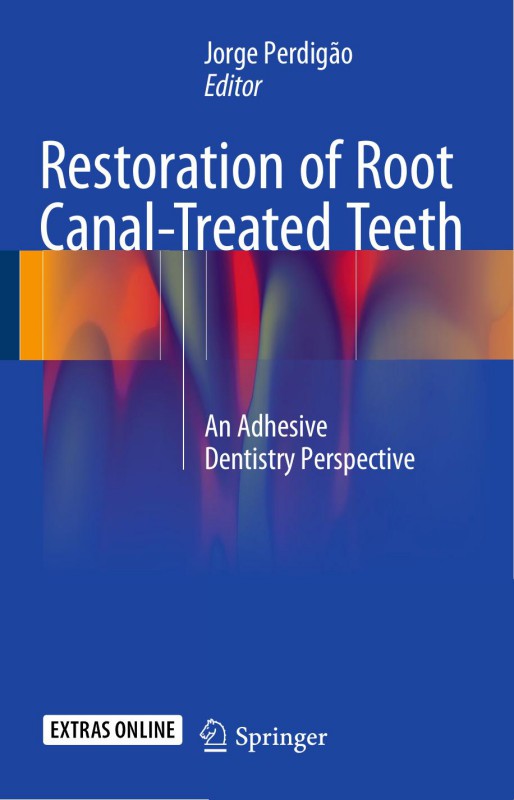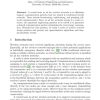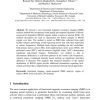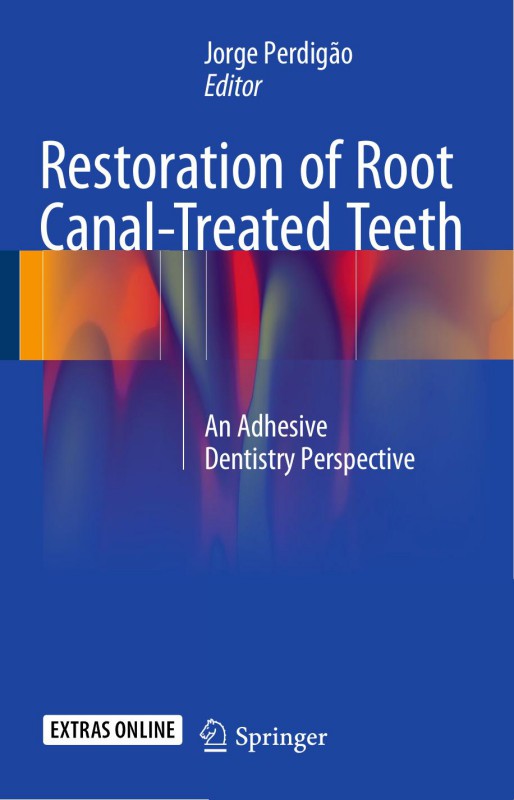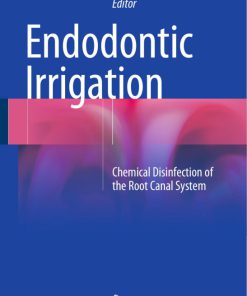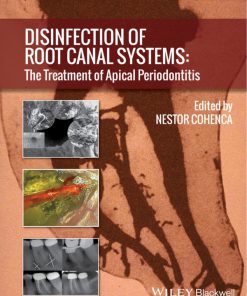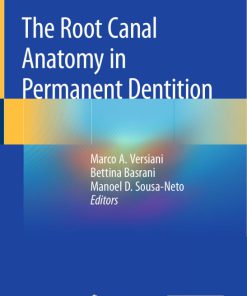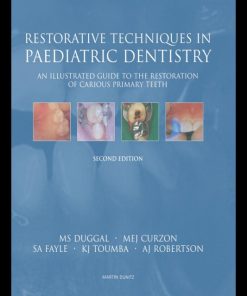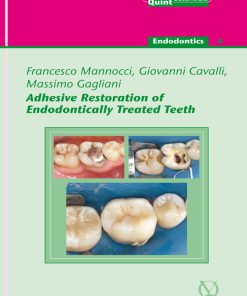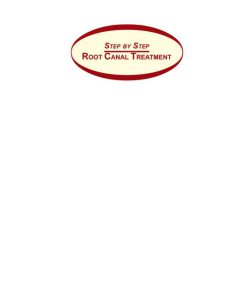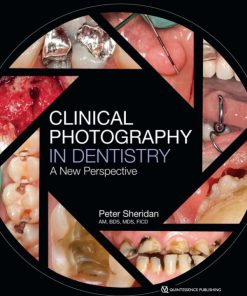Restoration of Root Canal Treated Teeth An Adhesive Dentistry Perspective 1st Edition by Jorge Perdigão ISBN 331915401X 9783319154015
$50.00 Original price was: $50.00.$25.00Current price is: $25.00.
Authors:Restoration of Root Canal-Treated Teeth An Adhesive Dentistry Perspective-Springer International Publishing (2016) , Author sort:Publishing, Restoration of Root Canal-Treated Teeth An Adhesive Dentistry Perspective-Springer International , Published:Published:Sep 2015
Restoration of Root Canal-Treated Teeth: An Adhesive Dentistry Perspective 1st Edition by Jorge Perdigão – Ebook PDF Instant Download/Delivery. 331915401X, 9783319154015
Full download Restoration of Root Canal-Treated Teeth: An Adhesive Dentistry Perspective 1st Edition after payment
Product details:
ISBN 10: 331915401X
ISBN 13: 9783319154015
Author: Jorge Perdigão
Restoration of Root Canal-Treated Teeth: An Adhesive Dentistry Perspective 1st Edition: This book offers a comprehensive and up-to-date overview of the restoration of teeth retained through root canal treatment, from the perspective of adhesive dentistry. The challenge of adhesion to root dentin is first explained and guidance provided on assessment of the restorability of endodontically treated teeth. The types of prefabricated passive post are then described in detail. The advantages and disadvantages of each type are outlined, with identification of the factors that influence post selection. Further topics include the ferrule effect, evidence‐based clinical applications of fiber posts and new methods to lute fiber posts to the root canal without dentin adhesives. In addition, frequent myths are identified and dispelled. All aspects are illustrated with clinical and laboratory images, diagrams and high-resolution electron microscopy photographs.
Restoration of Root Canal-Treated Teeth: An Adhesive Dentistry Perspective 1st Edition Table of contents:
1. Endodontic Considerations for the Restoration of Endodontically Treated Teeth
- 1.1 Introduction
- 1.2 How Does the Coronal Restoration Impact the Success of Endodontic Treatment?
- 1.3 When and Why Do Endodontically Treated Teeth Require Full Coverage?
- 1.3.1 Anterior Teeth
- 1.3.2 Posterior Teeth
- 1.3.3 Ferrule
- 1.4 Alternatives to the Ideal Restoration
- 1.4.1 Cuspal Coverage Amalgam
- 1.4.2 Cuspal Coverage Composite
- 1.5 What Are the Guidelines and Techniques for Post Preparations?
- 1.5.1 Timing of Post Space Preparation
- 1.5.2 Post Length
- 1.5.3 Post Placement Complications and Management
- 1.6 Coronal Microleakage
- 1.6.1 Orifice Barriers
- 1.7 Indications for the Use of Temporary Materials in Endodontics
- 1.7.1 Physical and Chemical Differences of the Temporary Restorations Used in Endodontics
- Conclusion
- References
2. Effect of Endodontic Treatment Procedures on Canal Shape and Mechanical Properties of a Tooth
- 2.1 Mechanical and Structural Characteristics of Root Dentin
- 2.2 Factors That Predispose Endodontically Treated Teeth to Fracture
- 2.2.1 Immature Teeth with Incomplete Root Formation
- 2.2.2 Endodontic Access Preparation
- 2.2.3 Root Canal Preparation: Stress Distribution Generated in Root Dentin During Root Canal Shaping
- 2.2.4 Loss of Dentin During Endodontic Treatment
- 2.3 Modifications Caused by Irrigants, Medicaments, and Root Canal Filling Materials on Mechanical Properties
- 2.4 Structural Moisture Content of Endodontically Treated Teeth
- 2.5 Effect of Different Canal Tapers on Radicular Stress Distributions
- 2.6 Root Dentin Strain and Temperature Rise During Endodontic Treatment and Post Space Preparation
- References
3. Restoring the Endodontically Treated Tooth: Treatment Planning Considerations
- 3.1 Introduction
- 3.2 Diagnosis
- 3.2.1 Assessing the Pulpal Status
- 3.2.2 Endo/Perio Lesions
- 3.2.3 Resorption
- 3.2.4 Periodontal Considerations
- 3.3 Tooth Restorability
- 3.3.1 Evaluation of the Remaining Tooth Structure
- 3.3.2 Ferrule
- 3.3.3 Dentin and Enamel Integrity
- 3.4 Prognosis of Endodontically Treated Teeth
- 3.4.1 Survival Rate of the Endodontically Treated Anterior Teeth
- 3.4.2 Survival Rate of the Endodontically Treated Posterior Teeth
- 3.4.3 The Importance of Proximal Contacts
- 3.4.4 FPDs and RPDs
- 3.5 Adjunct Surgical Procedures
- 3.5.1 Biologic Width
- 3.5.2 Crown Lengthening
- 3.6 Treatment Options for Missing Teeth
- 3.6.1 FPDs
- 3.6.2 RPDs
- 3.6.3 Endosseous Dental Implant
- 3.7 Summary
- References
4. Fiber-Reinforced Dental Materials in the Restoration of Root-Canal Treated Teeth
- 4.1 Introduction to Fiber-Reinforced Composites in Dentistry
- 4.2 Fiber-Reinforced Composites: Structure and Properties
- 4.2.1 Fiber Length and Orientation
- 4.2.2 Fiber Type
- 4.2.3 Bonding Properties
- 4.2.4 Hydrolytic Stability of FRCs
- 4.3 Applications of FRCs in the Restoration of RCT Teeth
- 4.3.1 Unidirectional FRCs
- 4.3.1.1 Prefabricated FRC Posts
- 4.3.1.2 Individually Formed FRC Posts
- 4.3.2 Short Discontinuous FRCs in Restoring RCT Teeth
- 4.3.1 Unidirectional FRCs
- Conclusion
- References
5. Biomechanical Principles of Root Canal-Treated Teeth Restored with Fiber-Reinforced Resin Posts
- 5.1 Effect of Mechanical Properties of Post Systems and Post-Dentin Interaction on Stress/Strain
- 5.2 Effect of Post Length on Mechanical Properties of Endodontically Treated Restored Teeth
- 5.3 Biomechanical Performance of Fiber Posts on Anterior vs. Posterior Teeth
- 5.4 Restoring Weakened Endodontically Treated Teeth with Anatomic Fiber Post
- 5.5 Effect of Luting Procedures
- 5.6 Effect of Ferrule Design on Biomechanical Behavior of Endodontically Treated Restored Teeth
- 5.7 Effect of Coronal Restoration on Biomechanical Behavior of Endodontically Treated Teeth Restored with Fiber Posts
- 5.8 Beyond Fiber Post Restorations: Monolithic Adhesive Endocrown Restorations for Endodontically Treated Teeth
- References
People also search for Restoration of Root Canal-Treated Teeth: An Adhesive Dentistry Perspective 1st Edition:
how long do teeth survive after root canal
can a tooth go bad after a root canal
what is restoration after a root canal
restoration of tooth after root canal
root canal restoration procedure
restoration of the root canal treated tooth

